Rebellion Games at 25: It all started ‘just like Stranger Things’
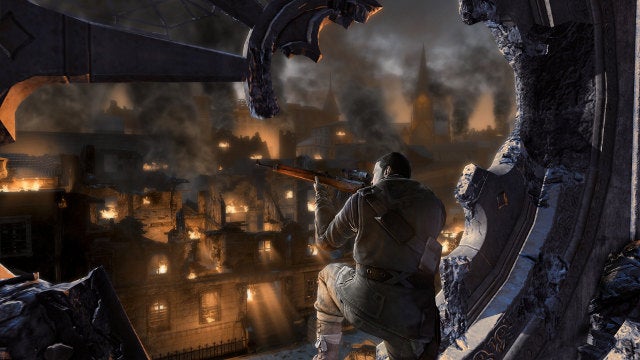
The leading UK studio reached its 25th birthday this week. To celebrate, Stuart Andrews met its CEO and founder, Jason Kingsley.
Even by the standards of other game developers, Rebellion is an unusual company. Behind the studio’s vast open-plan office there’s a warehouse packed with ancient consoles, sci-fi props, larger than life Judge Dredd vs. Judge Death statues and 2000AD memorabilia. Its CEO moonlights as a knight, jousting in tournaments, and spends his spare time investigating history by riding an authentic Celtic chariot.
On Tuesday December 5, the studio that bought us Sniper Elite, Rogue Trooper and Aliens vs Predator turned 25; a massive milestone for one of the UK’s longest-serving and most successful independent developers. To celebrate, I went to Oxford to speak to that CEO, Jason Kingsley, to talk about that 25-year history and where Rebellion headed.
Related: Best PC games
Rebellion was founded in the city in 1992 by Jason and his brother Chris. “I don’t remember ever not being into games,” he says. “I went through a quite traditional, quite high-level education, so I did O levels and A levels and then went on to university. But throughout my academic career – I went to Oxford to do zoology – I was interested in games, in modifying games for other people, and in making up games and landscapes for people to explore.”
At school, this manifested in a love of Dungeons and Dragons and other role-playing games, played during a lunchtimes club. “It’s quite funny, thinking of the Stranger Things TV show,” he says, “because that was me. I was there, and I knew all that. I managed to persuade a teacher to lend us one of the store cupboards, so we could keep going from day to day with a table in it, so that the role-playing gang could play.” Then, while at university, Kingsley wrote a couple of successful adventure game books for Ladybird. “I thought that one of the problems with those was that you could decide to make a choice, and if you turned one way or the other you can always go back. I thought that was unfair,” he explains.
Kingsley and his brother had already got into computers, their father having saved up to buy them a Commodore Pet. Chris was the more technical brother, but Jason had developed a talent for computer art. The Kingsleys went from keying in the games shared as listings in monthly magazines to attempting to computerise adventure game books, and from there game development was a natural progression. The two worked on Amiga titles like Hunt for Red October for Oxford Digital Enterprises and proto-fantasy slasher Blade Warrior for Mirrorsoft, before starting Rebellion and moving on to the PC with an ambitious space exploration game, Eye of the Storm.

Atari and the Jaguar
In 1992, the Kingsleys had a fateful meeting with Atari: “Atari by then was a shadow of its former self. It had shrunk to a much smaller scale, and we went into these huge offices in Slough and these obviously hadn’t been renovated in quite a while. They had brown hessian wallpaper. It was very 1970s.” Chris and Jason showed a demo of a game where dragons fought Viking longships to Atari UK’s Alastair Boden, and he insisted that they show it his Managing Director, Bob Gleadow. Gleadow said it would be perfect for Atari’s new console.
This was a surprise both to Kingsley and to Atari’s own UK team. “Alastair Boden and the other people from Atari said ‘what new console?’ So that was their official internal announcement. Then there was a rather awkward conversation where myself and my brother – young men who had come in with a demo – were involved in this high-level politics conversation, but they commissioned us to make two games: Aliens vs Predator and Checkered Flag.”
Related: Best Xbox One games
The first, released in 1994, turned into Rebellion’s big break. The two games were challenging projects, running on the then unknown, cutting-edge 64-bit Jaguar hardware. “We worked with some very talented people’ says Kingsley, including a core programming team of Mike Beaton, Andrew Whittaker and Mike Pooler. ‘We also innovated. We were doing 16-bit graphics at a time when no-one else was doing them, and two-and-a-half-D at the same time as Doom.” The Jaguar never sold in huge numbers, but Aliens vs Predator was – along with Jeff Minter’s Tempest 2000 – its system seller; you could play as an alien, a predator or a colonial marine, while the visuals seemed photorealistic by the standards of 1994. The team created its sprites by photographing models of the alien protagonists, animating them by hand, and scanning the developed photos in for further artwork.
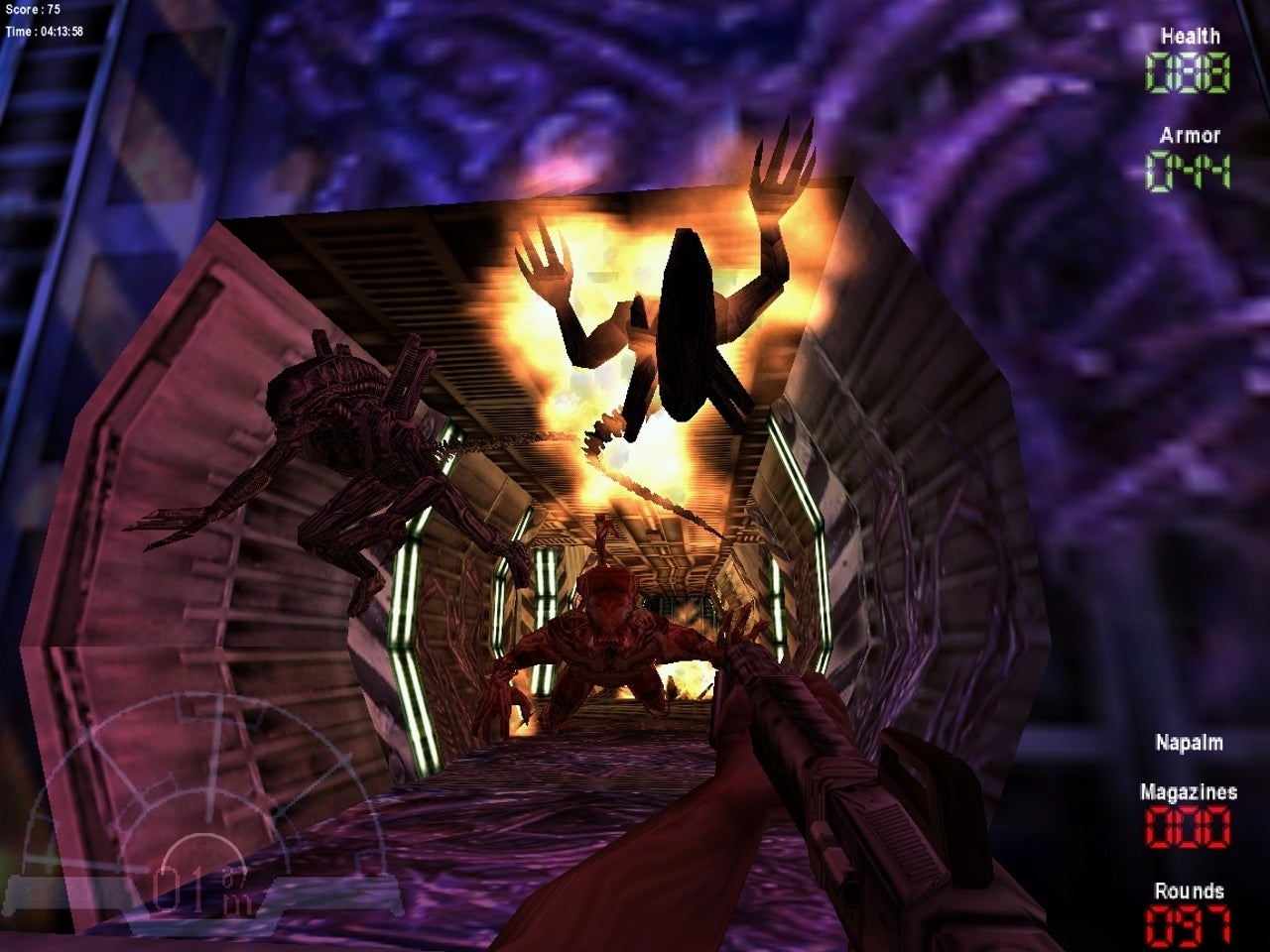
Guns for Hire
With a showcase game under their belts, Rebellion moved into work for hire. “We expanded the company and worked on a lot of big brands: Harry Potter, Star Wars, James Bond, The Simpsons – The Simpsons was massive. We did tons and tons of games for other people, which is great, but they were other people’s intellectual property and we always wanted to make our own.”
Working across every platform going, from the PS2 to PSP to the PC and Game Boy Advance, Rebellion still found ways to make waves. In 1999 the studio returned to Aliens vs Predator, expanding on its three-way single-player campaign and introducing one of the first asynchronous multiplayer modes. “I loved it,” Kingsley says of the franchise. “The Aliens movie, as opposed to Alien, was the type of sci-fi that I have always liked…. a type of science fiction which involves blocked toilets, oil leaks, make-do-and-mend, bad weather, all the stuff that will exist in the future, but that we happily gloss over when we want an escapist sci-fi fantasy.”
From the start, Kingsley was determined to recreate the feel of Aliens “which is basically Vietnam or World War II but with futuristic weapons. They spit, they sweat, they go to the loo, and things are trying to eat them. I like that side of things.” However, he also wanted the new AvP to be its own thing.
‘‘One of the things I felt was important, always, is that when you’re making a game based on a really great movie, what you shouldn’t do is reprise the movie story,” he said. “You boil it down, you take the essence of what the Aliens franchise is, and then build it back up again as a story. That was really what we wanted to do. We didn’t want to copy the story. We wanted to create an experience.’
The three-way campaign and multiplayer mode became core to that. “I thought it would be fun to play as the alien with the alien’s abilities” says Kingsley. “The alien didn’t have ranged weapons, so you had to have speed and manoeuvrability.”
This resulted in a vertiginous, sometimes nauseating experience of speeding across ceilings, through vents and up and down walls, but one that made the game incredibly distinctive. “That was quite a difficult balancing act to get that working and, in the multiplayer component, we felt very much that the alien was the hardest character to play, but it was the best character if you were very good at it,” Kingsley notes. ‘The alien was weak unless you could sneak up and get in close… you could drop down on somebody and bite their face off.’
Related: Best PS4 games
Rebellion made this possible by using their own tech; an engine that’s evolved over the last twenty years into the Asura engine the studio still works with today. “Aliens vs Predator had aliens walking on the ceilings. You could play the alien, and no other game allowed you to do that. The one that was done by one of our competitors, Monolith, didn’t actually rotate the landscape because they couldn’t. They had to change the gameplay to reflect what they could do in their engine.”
By working with and developing Asura, Rebellion has been able to focus its technology on the specific requirements of its games. With Sniper Elite, for example, that might be the ability to see and zoom in at huge distances. “A lot of games don’t allow you to zoom in very far, because they can’t,” says Kingsley. “A lot of people don’t realise this, but sometimes, with our games, we make challenges for ourselves.”
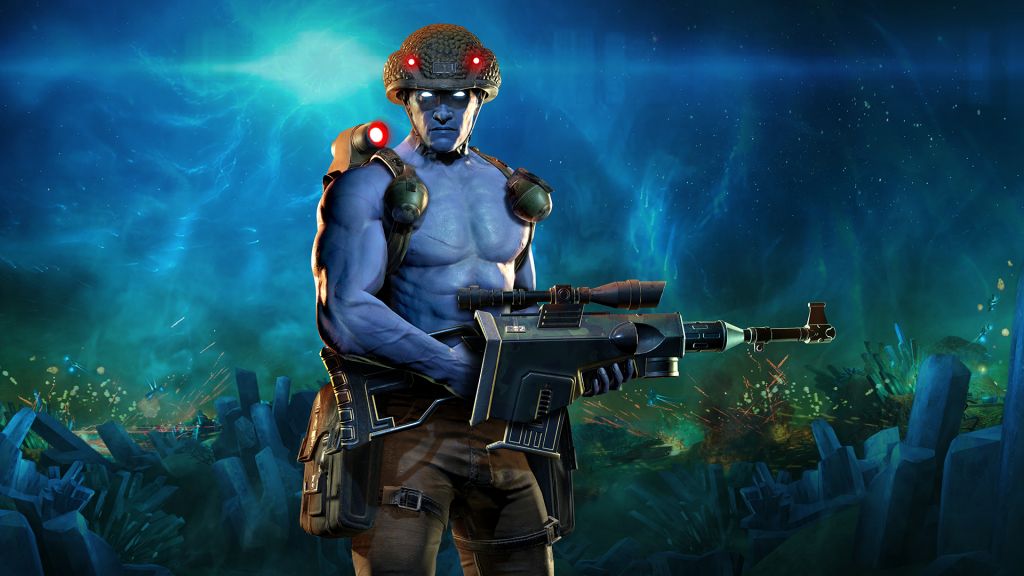
Dredd and Rogue
In 2000, Rebellion made headlines by buying the library and assets of the classic British sci-fi comic, 2000AD.
Was it a business decision or for love of the comic and its iconic characters? Kingsley hesitates. “I’ve been asked that before, and I think it’s probably 50/50,” he says, “I don’t think we’d have been able to do it if it hadn’t been a good business decision, but I don’t think we’d have been interested in doing it if it hadn’t been a passion and something that needed to be done.”
Rebellion had ideas for the different IPs. “Where suitable we could make games from them, we could do books, we could do novels, we could do collectible figurines; we felt there were lots of areas where we could do business. But I think, if you asked me, if I had to say was it business or passion, then it was passion first. It needed to be rescued, it needed to be reinvigorated and I felt it very important for British culture, as well, that it didn’t die on its arse.”
Rebellion could never be accused of over-milking its acquisition; in fact, many fans would argue the opposite is true. Yet two 2000AD stars made it into Rebellion video games during the next few years, with 2004’s Judge Dredd: Dredd vs Death and 2006’s Rogue Trooper.
Recently reworked with 2017-ready visuals, the latter was underrated on release, doing justice to the character and bringing in some surprisingly forward-looking gameplay through the sentient chips implanted in your gear. “It definitely didn’t get the credit for innovating a lot of cover-based shooter mechanics,” says Kingsley, noting that Rogue Trooper came out before Epic’s Gears of War. This year’s Redux version came from a desire to expose the game to a new generation of players.
‘We felt that the gameplay was rock-solid and deserved another outing,” says Kingsley, “but the graphics were not of the standard that people expect from modern games…. So, we thought that, as an experiment, let’s whiz the graphics up a good few notches, make it more accessible to a modern audience and see how they respond to the gameplay. And it’s been incredibly successful.”
Despite this, Rebellion has no immediate plans for more 2000AD games, though “there are a few bits and bobs being done in the background”. The studio recently announced that it is opening up the iconic characters for other studios to develop games.
Related: Best PlayStation VR games
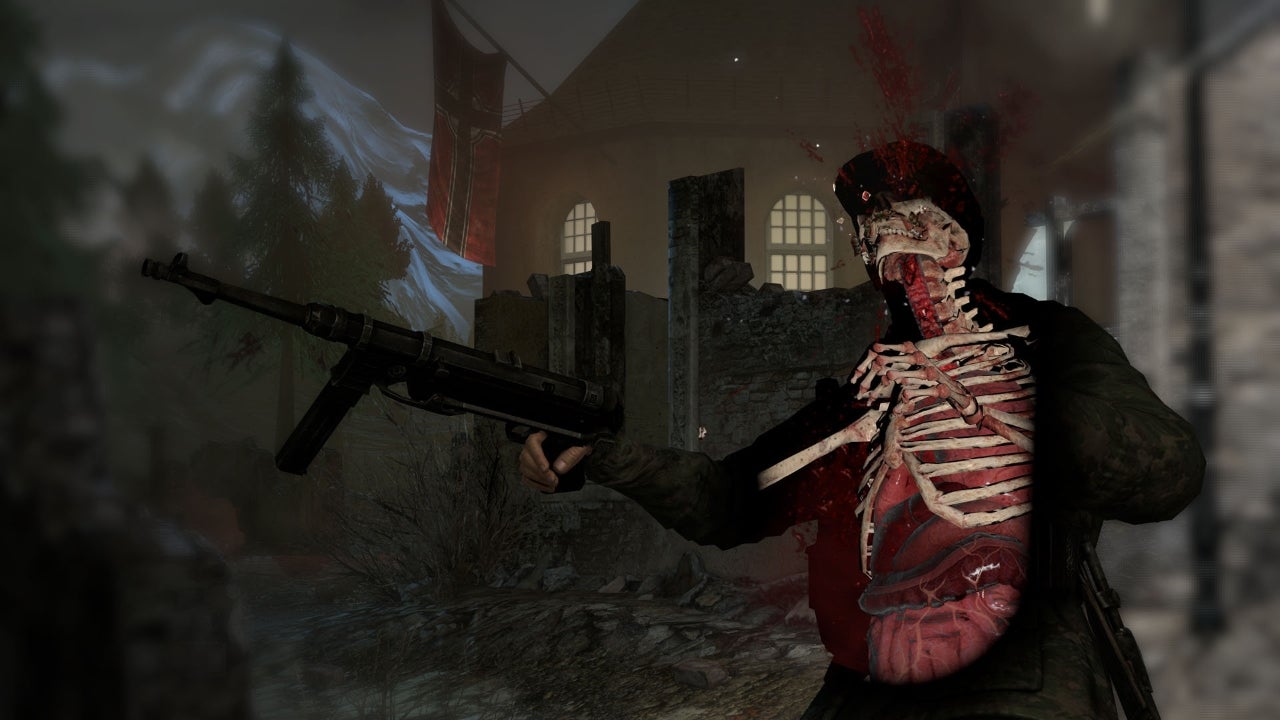
Joining the Elite
One reason why Rebellion has been kept so busy is the success of Sniper Elite, a cult hit on release in 2005, but now its biggest self-owned franchise. ‘‘You never start out thinking something is going to be a huge success,” says Kingsley. “Sniper Elite isn’t right up there with something like Assassin’s Creed or Call of Duty, but it’s sort of in the same league. They sell three times as much as us but they cost twenty times as much to make.”
“It was originally meant to be a more strategic, thinking-person’s shooter,” he explains. “It was made deliberately to stand alongside other games in World War II, but you were a specialist; a sniper. Then the Bullet Cam was a clever idea, and it followed that.” The Bullet Cam, with its trademark X-Ray, slow-motion replay of the game’s fatal shots, has become Sniper Elite’s signature: the grisly pay-off that keeps you coming back for more. Yet this wasn’t the original intention.
“The idea behind Sniper Elite was always the opposite of running into a room and machine-gunning everybody to death,” says Kingsley, “then going into the next room and machine-gunning everybody to death. We wanted to make people think about what they were doing.” Kingsley saw the Bullet Cam as a way to “emphasise how horrible the bullet is, yet that one bullet can change history…. the idea was more to make you think about each shot and whether you need to take that shot”.
In Sniper Elite 4, this extends to the intel you can collect about your Axis enemies. “You might have one German guard where the Intel says he has two young children,” explains Kingsley, “and he’s really looking forward to going home, and the other guard might be torturing partisans to death and is a well-known bully, so you become more comfortable with taking that one out. There are these layers of gameplay for an older, more sophisticated audience.”
Part of Sniper Elite’s appeal is its openness and its flexibility. You can enjoy it as a challenging sniper sim or as the kind of pulp-fiction World War II action game where it’s almost more fun when things go wrong.
Related: Best Nintendo Switch games
Kingsley says this was intentional: “I don’t want people restarting a level if it goes wrong. I want them to be able to recover and go ‘oh, no, how am I going to keep going?’ rather than go, well, I’d better just reload’’ he says. “I don’t want people to be thinking in terms of how the games designer or the level designer wanted them to play; I want them to play the game the way they want and have a living environment that responds and reacts to them in a semi-intelligent way.”
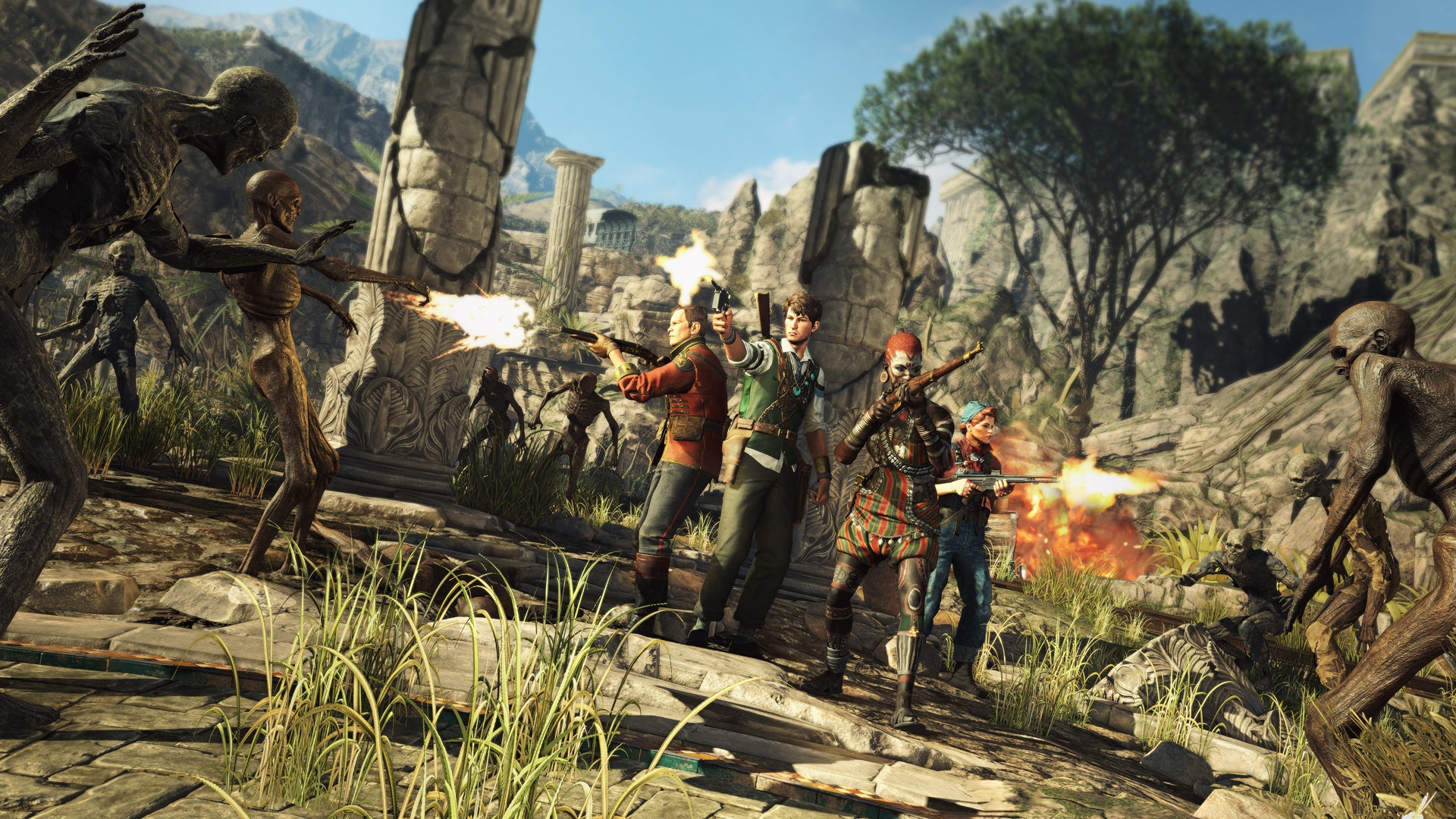
Stranger Things
Thanks to games like Aliens vs Predator the Sniper Elite series, Rebellion has grown from a small team focused around the Kingsley Brothers to a studio employing more than 200 people, that’s successfully diversified into comics, books and even video and TV. Last year’s VR reimagining of Battlezone became one of the flagship early games for PlayStation VR. The studio continues to invest in its own technology, with internal greenscreen and photogrammetry studios, while Kingsley is a producer for the mooted Judge Dredd: Mega-City One TV show.
Games-wise, the next project is Strange Brigade, the co-op action adventure announced at E3 2017. With a very British blend of pulp fiction, fantasy and tongue-in-cheek British Empire pomp, it’s a very Rebellion game. ‘‘It comes from the earliest places of genre in screen entertainment. It comes from the Saturday matinee, where you paid your penny and went to see something at the cinema and the cinema wanted you to come back next week” says Kingsley. It’s a game where old sci-fi and adventure serials mix with the Boy’s Own adventure stories of the early 20th Century – Kingsley shows me an old Adventure Land compendium with a tiger attacking a speeding Bugatti in the African jungle – but it all plays out with a knowing humour.
“There’s a lot of awareness at the moment that some of these things are seen differently now, but at their heart these are action adventure stories that we wanted to bring back,” Kingsley explains. “Indiana Jones is the same thing. Tomb Raider is the same thing, but we wanted to go back to the basics. We didn’t want to borrow from them; we wanted to go back to where they borrowed from, which is these fantastic stories with derring-do and bravery and exploration.”
To up the ante, Strange Brigade is also going big on an unreliable narrator giving feedback. “Its something that we’re playing with a lot,” says Kingsley. “It’s a really big component of these types of fiction, and we lifted it straight from this kind of action-adventure.”
How this plays out in practice remains to be seen, but expect Strange Brigade to follow the classic Rebellion ethos, working hard to build something that feels like a triple A game on a tighter budget, with the focus on entertainment. “We’re in a very comfortable place,” says Kingsley. “We’re not that bothered about what other people do. We just care about whether people like to buy and play our games.”
Related: Super Mario Odyssey review
What do you think of Rebellion? Let us know via Facebook or tweet us @TrustedReviews.

